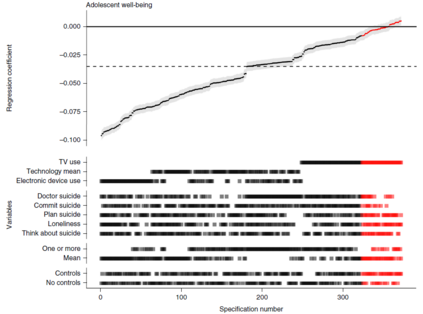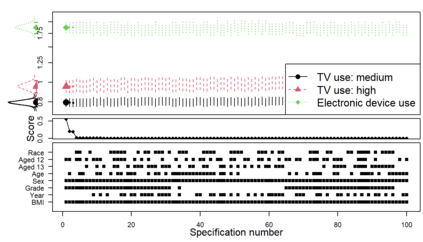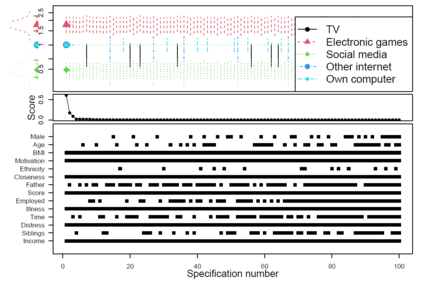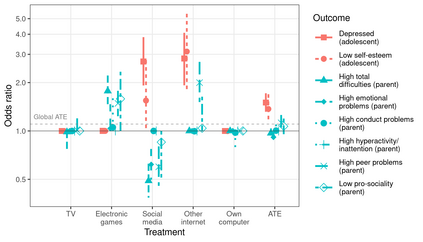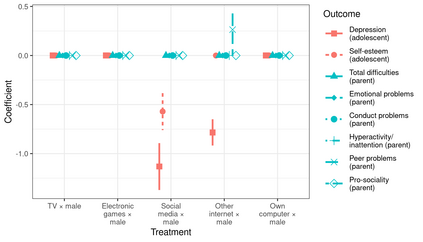A key issue in science is assessing robustness to data analysis choices, while avoiding selective reporting and providing valid inference. Specification Curve Analysis is a tool intended to prevent selective reporting. Alas, when used for inference it can create severe biases and false positives, due to wrongly adjusting for covariates, and mask important treatment effect heterogeneity. As our motivating application, it led an influential study to conclude there is no relevant association between technology use and teenager mental well-being. We discuss these issues and propose a strategy for valid inference. Bayesian Specification Curve Analysis (BSCA) uses Bayesian Model Averaging to incorporate covariates and heterogeneous effects across treatments, outcomes and sub-populations. BSCA gives significantly different insights into teenager well-being. It provides strong evidence that technology has relevant associations with teenager well-being: (1) well-being is negatively associated with electronic device usage, (2) social media use is negatively associated with self-assessed well-being but positively associated with parent-assessed well-being, and (3) has a stronger negative association with self-assessed well-being for girls compared to boys.
翻译:科学中的一个关键问题是评估数据分析选择的稳健性,同时避免选择性报告和提供有效的推断。具体曲线分析是一个旨在预防选择性报告的工具。在用于推断时,由于对共变体的错误调整,它可能产生严重的偏差和假阳性,并掩盖重要的治疗效应异质性。作为我们的激励应用,它导致一项有影响力的研究,以得出技术使用与青少年心理健康之间没有关联的结论。我们讨论这些问题,并提出一个有效推断战略。贝叶斯分化曲线分析(BSCA)利用巴伊西亚模型将各种治疗、结果和亚人口之间的异同效应和不同影响纳入其中。BSCA对青少年福祉的洞察差异很大。它提供了有力的证据,证明技术与青少年福祉有关:(1) 福祉与电子设备使用有负面关系,(2) 社会媒体使用与自我评估的福祉有负联系,但与父母评估福祉有积极联系,(3) 与女孩的自我评估健康有较强的负联系。

